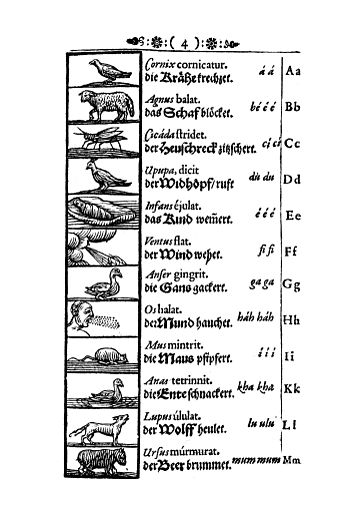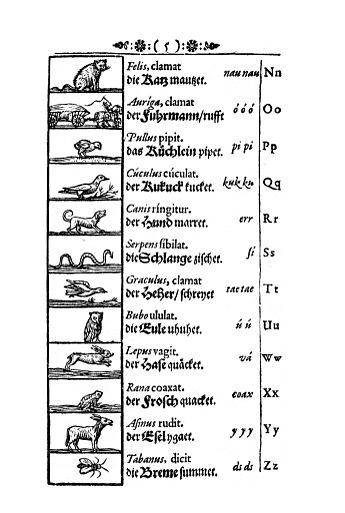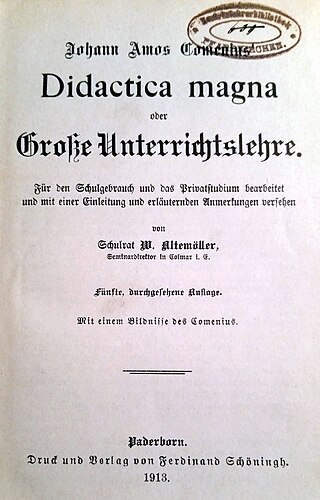This article needs additional citations for verification .(February 2024) |
An initial sound table (German: Anlauttabel) is a table, list or chart which shows a letter together with a picture of the things whose word start with that letter. They are commonly used in German classrooms for language teaching. The first initial sound table was created in 1658 by John Amos Comenius in Orbis Pictus, a picture book intended for children. They were popularized in the German-speaking areas by Jürgen Reichen who used initial sound tables to assist students to recognise initial sounds and to get first reading and writing skills. [1]
Contents
- Writing to read
- Initial sound keyboard
- Initial sound examples
- See also
- Bibliography
- References
- External links
Alternative names: initial sound list, initial sound chart, initial sound alphabet, alphabet chart, alphabet picture chart









